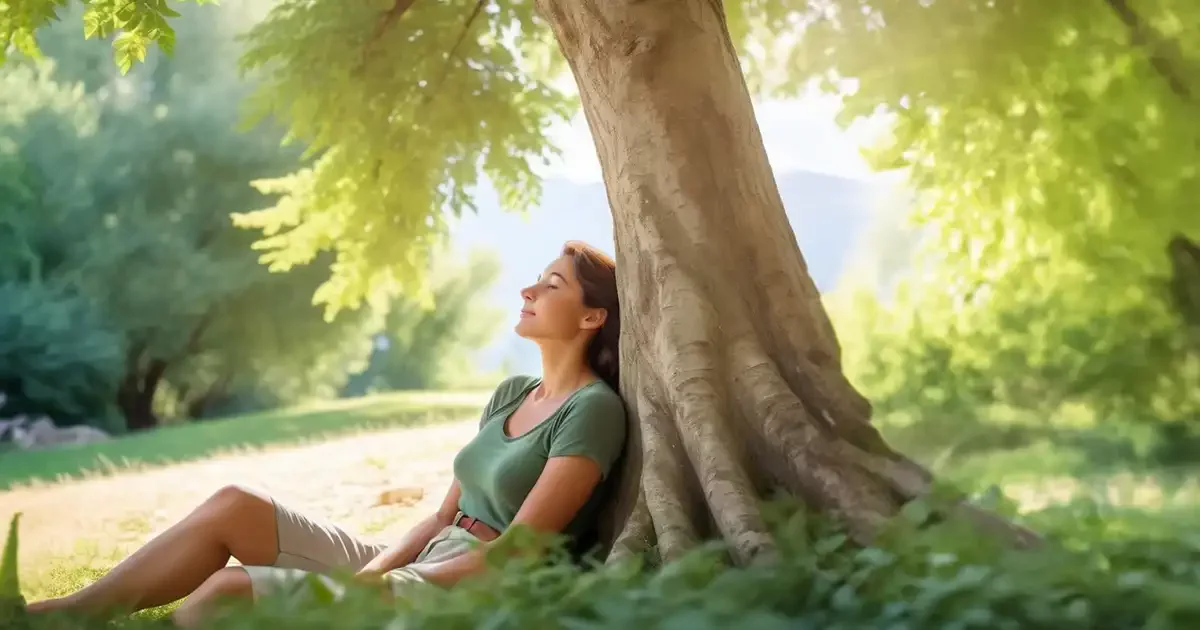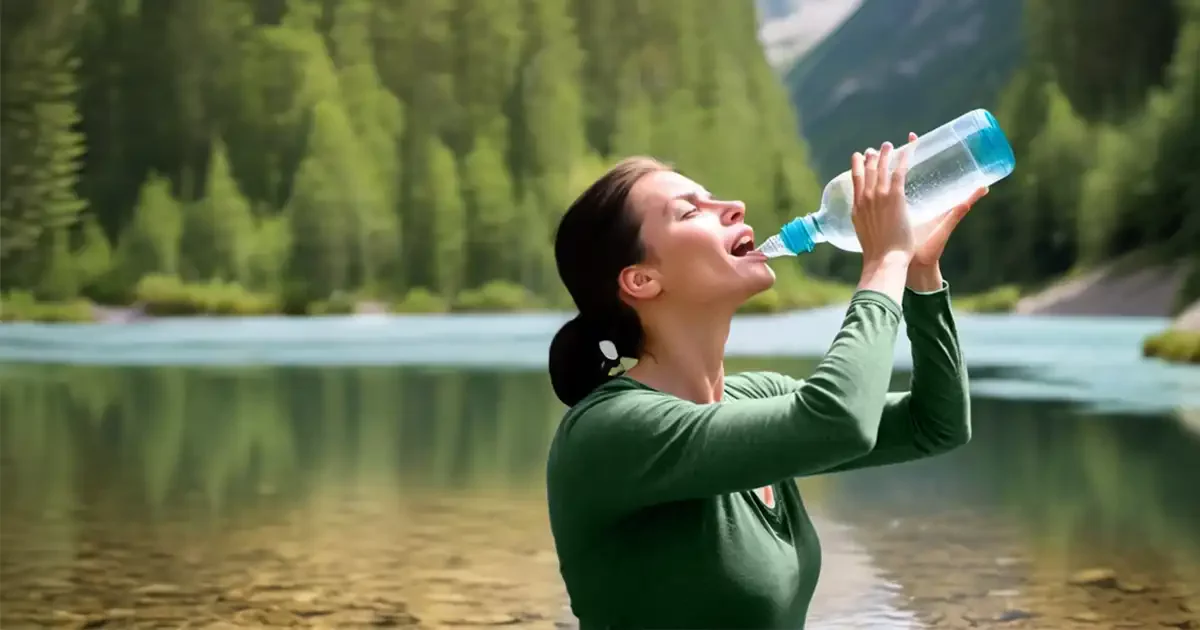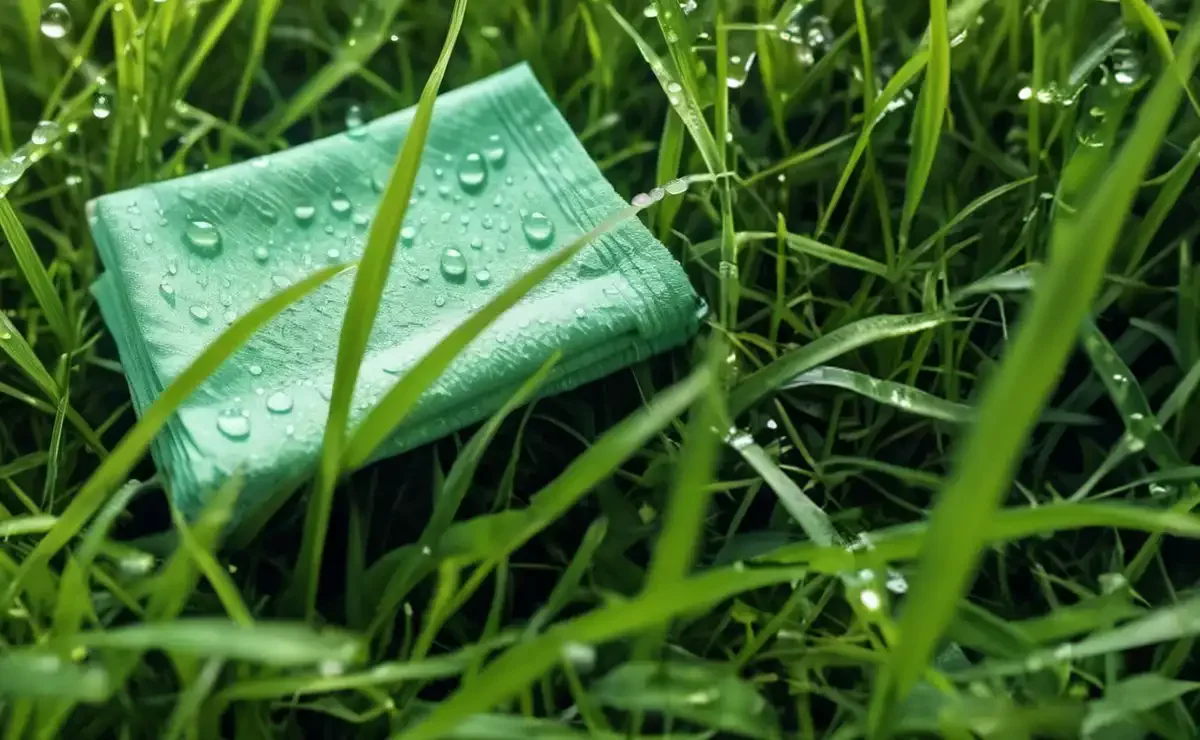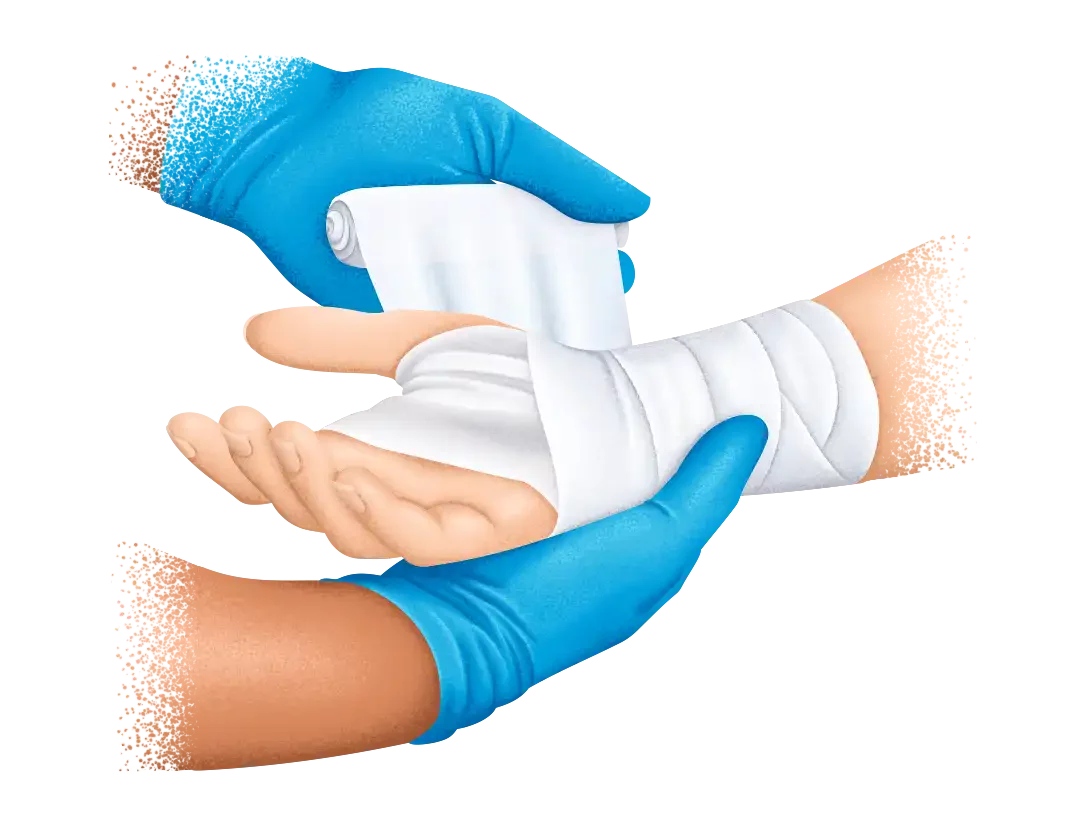august 18th, 2024
Sunburn
Moisturizing needs for a mountain hike!
History
Moisturizing needs for a mountain hike!
Émilie, a young woman with a passion for hiking, loves to spend her weekends exploring new trails. On a hot summer Saturday, she decides to take a trip to a mountainous region with her friends. She made sure to apply sun cream throughout the day.
In the afternoon, she began to feel burning on her skin and an unusual tiredness. After a few hours, the pain became unbearable and she felt dizzy and nauseous. Her worried friends sat her down in the shade, trying to help her.


Julien, a hiker trained in first aid, noticed Émilie's distress as he happened to be passing along the same path. He went over to assess the situation. He saw that she was suffering from severe sunburn, with intense redness and blisters on her shoulders and arms, as well as showing signs of dehydration. He immediately asked one of Émilie's friends to call for help while he administered first aid.
He moved her to a shadier spot and gave her water in small sips to keep her hydrated. He used a damp towel to gradually cool her skin, without bursting the blisters. While waiting for help, he continues to check her vital signs regularly and reassures her to keep her awake.
Thanks to this appropriate intervention, Émilie was stabilised until the rescuers arrived. She was then taken to hospital for further treatment.
In resume
Émilie's speedy recovery shows that Julien's help was decisive in managing the effects of her severe sunburn.
This episode confirms the vital importance of following and understanding specific protocols in critical situations.

PROTOCOLE OF INTERVENTION
Severe sunburn
By understanding the key steps in the protocol and putting them into practice, we can be better prepared to react quickly and correctly in the event of a similar emergency. So let's learn together the essential steps to take to provide optimum assistance in such situations.
1) EVALUATING THE SITUATION
Secure the area to prevent further exposure to the sun.
Assess the severity of the sunburn and associated symptoms:
redness, blistering, dehydration.
2) CONTROLLING THE HAEMORRHAGE
Apply direct pressure to the wound with a clean compress or cloth to control bleeding.
3) HYDRATE
Sip water to avoid dehydration.
Avoid alcoholic or caffeinated drinks, which can aggravate dehydration.
4) PROTECT
Do not burst burn blisters to avoid infection.
Use light, covering clothing to protect burnt skin from the sun.
5) MONITORING
Observe for signs of shock :
paleness, sweating or excessive tiredness.
Stay with the victim and reassure them until help arrives.
Serious injury
Critical hyperthermia
Although the previous intervention is essential, rapid dehydration and heat shock can be life-threatening.
It is therefore crucial to know when and how to apply emergency cooling and rehydration techniques.

POSITIONING
Between the heart and the wound. Above where the bleeding was heaviest.
APPLICATION OF PRESSURE
Prolonged, constant and sufficiently strong pressure to block the blood flow.
IMPROVISED / SPECIALISED EQUIPMENT
Wide fabric band / belt.
* The important thing is to ensure that the material used is wide enough to avoid damaging the underlying tissue, while still applying adequate pressure.
THE DANGER OF THE TOURNIQUET
Prolonged application of pressure can lead to necrosis of the tissue under the compressed area.
If signs of necrosis are detected: release the pressure while keeping the bleeding under control.
Importance of training
This fictional situation shows us that real knowledge in terms of first aid is essential during life-threatening events. Rapid and appropriate intervention can also significantly promote healing and recovery from a serious injury. Mastering the knowledge of a complete first aid course can be useful in many critical situations, and even in accidental everyday care.
Conclusion
Julien's knowledge and skills not only helped control the dehydration and burns, but also stabilised Émilie until professional help arrived. This situation reminds us that everyone can play a vital role in an emergency, and that simple but well-executed actions can have a real impact when it comes to the lives of others.
First aid should be a skill that everyone should learn. By being prepared, we can protect ourselves, but also offer invaluable help to strangers in distress. It is therefore essential to promote first aid training in our communities and to remind ourselves every day that every gesture counts.
At the end of the day, a modern society should certainly equip its citizens to help others.
Let's learn, practise and share these skills to create a safer environment for everyone.
Written by Alexandre Grenier, Founder of Académie Saint-Bernard
Layout and revised by Roxanne Duchesneau, Graphic Designer
